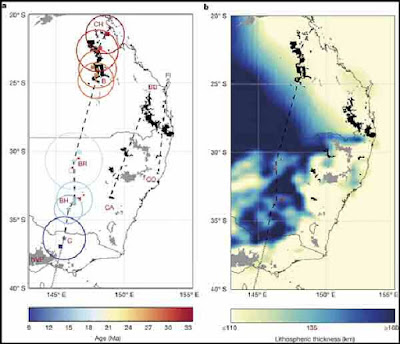Scientists have always said that Australia is the safest country on earth in regard to volcanic eruptions and earthquakes. Now we find that this is totally wrong. A massive volcanic chain has been discovered stretching from Hillsborough in central Queensland in a straight line down to Cosgrove in Victoria, then into the sea.
The Australian continent has moved right over the top of the chain leaving volcanoes under the sea in Bass Strait. Yellowstone in North America is only a third as long as the new Australian hot spot. It is unusual because it is not located on a tectonic plate boundary. This type of volcanic chain was not thought to exist.
A weakness above a mantle plume has allowed volcanoes to break through to the surface. The mantle is 3,000 kilometers below. The Cosgrove hot spot could become active especially in the south where it is younger. This could happen as the Australian tectonic plate is the fastest moving on the planet.
Active volcanoes normally exist where the mantle is less than 100 kilometers thick on average. Cosgrove is 150 kilometers thick at its greatest. This is not a law for activity. Eruptions are still possible. Seismic activity is occurring off the north coast of Tasmania.
◆ Science by Ty Buchanan ◆
●




